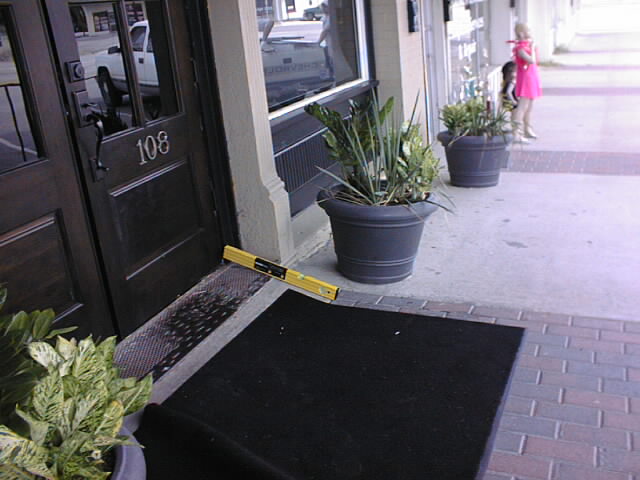Volume IV Number 12 December 2009
Doors |
Doorways are sometimes confusing to design for accessibility. There are many possibilities, from the way you approach the door, to the direction of the door itself. This newsletter will discuss landings at doors, doors at residential situations where a disabled person lives there, and maneuvering clearances at the pull side. |
| Landing at Doors |
TAS and ADA 4.13 requires a level landing (no greater than 2%) that is 5'-0" deep in front of the door. This is so that a person in a wheelchair can have a level area for them to open the door and maneuver through it.
If the door does not have a level landing, then the wheelchair would roll back as soon as it would stop to open the door.
One way to correct this, if the landing cannot be made level, is to have an automatic door opener (also located at a level area) which would open the door automatically and would allow a person in a wheelchair to go through without having to stop and maneuver around the doors.

|
| Doorways at residences |
"Aging in Place" is a new initiative that believes a person, as they age, should be able to remain at their house by re-modeling it for accessibility.
One of the challenges a disabled person faces is that most residential doors are less than 32" wide, especially in bathrooms where they can be 24" wide. A wheelchair cannot enter or exit a room that has a door smaller in width than 32" wide. Remodeling a home to enlarge the doorways may be just a matter of replacing the door with pocket doors, or even curtains, in order for a person in a wheelchair to avoid the maneuvering problems.
|